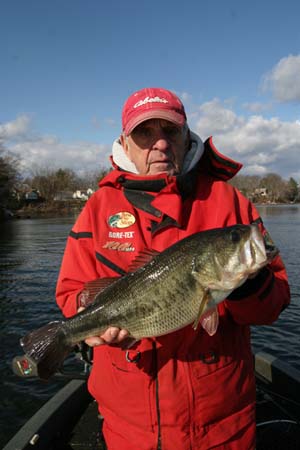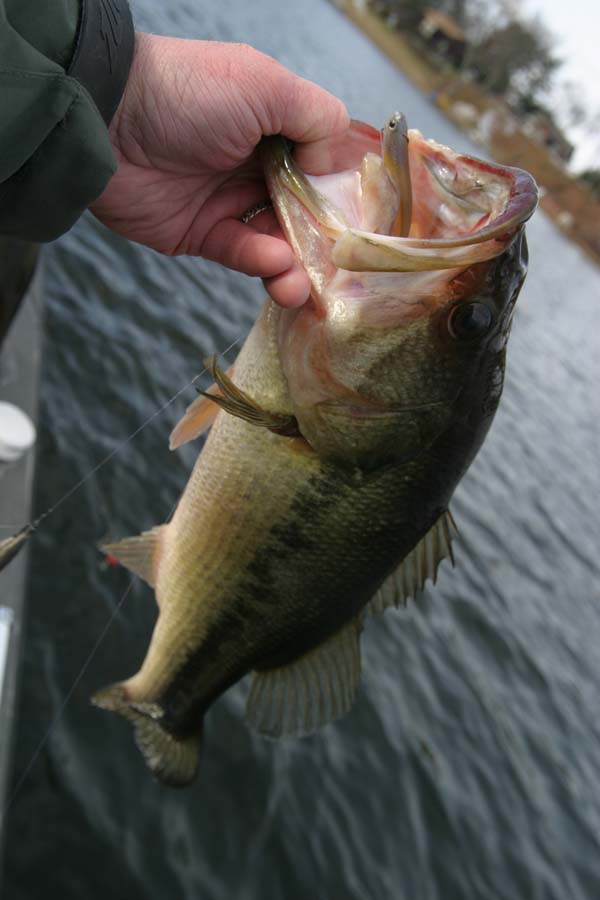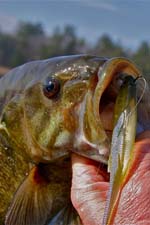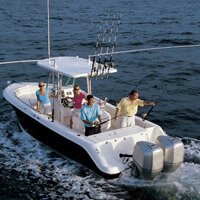Think Your Fishing Season Is Over Just Because It’s Winter? No way!
Follow these great tips to catch your limit in colder weather.
 Some parts of the country have already stopped reading. That’s because there are some regions throughout the United States that have legitimate, all-season weather for fishing. Sure, they may have to struggle through a 48-degree evening once in a while, but they know they sun will come out tomorrow and the fish will get active again, looking for their next meal.
Some parts of the country have already stopped reading. That’s because there are some regions throughout the United States that have legitimate, all-season weather for fishing. Sure, they may have to struggle through a 48-degree evening once in a while, but they know they sun will come out tomorrow and the fish will get active again, looking for their next meal.
But the vast majority of anglers know what winter can bring. Snow, wind, freezing rain. And the fish seem to be just fine where they are, snuggled up all cozy. It’s as if they know they’ll likely expend more of their precious energy chasing your bait than they will gain IF they catch up to it.
Of course, if you have a winter-long hard freeze keeping your water covered with ice, you’re dealing with another sport altogether. But what can you do if you’re hot to get out on the water, but are reluctant to suffer the brutally cold weather with the thought of striking out? Not to worry, some of our fishing guide friends have offered to help you figure out the mystery of how to give your lure some allure when the thermometer takes a dive. Now, go get ‘em!
Photo right: Charlie Jutras holds a 6.8-lb. largemouth bass caught at a depth of 27 feet. Water temperature 45 degrees; air temperature 38 degrees.
Billy “Hawkeye” Decoteau
 Even in the middle of winter, sunny days are best for these cold-water techniques. Anglers should concentrate on the sunny side of bridge pilings, bluff walls, boat docks or floating tire reefs. The sun seems strongest at approximately 2 p.m. — that’s when a slow day can suddenly turn into a feeding frenzy!
Even in the middle of winter, sunny days are best for these cold-water techniques. Anglers should concentrate on the sunny side of bridge pilings, bluff walls, boat docks or floating tire reefs. The sun seems strongest at approximately 2 p.m. — that’s when a slow day can suddenly turn into a feeding frenzy!
Bass are cold-blooded creatures, and their every action is dictated by water temperature. During cold-water periods, bass become more lethargic, requiring presentations to be natural and realistic. Many anglers will continue to utilize braided line in cold water. However, braided line will become limp in cold water. Remember that lethargic bass bites are very subtle, making them extremely difficult to detect, thus requiring the most sensitive line possible.
When flipping wood, riprap, or isolated pieces of cover in water depths of 10-12 feet, you want to use 20-25 lb. test line. You have to make sure you’re spooling line that gives you a feeling on soft bites, but has a strong-enough core so it’s forgiving when your jigs falls deep into the snarly areas where break-offs usually occur.
Targeting deep-water bass calls for finesse tactics and constantly monitoring your sonar for groups of baitfish. Cylinder-style, drop-shot weights are best for hard structure and rocky cover. Vary the weight size based upon depth, current and wind conditions. If you normally use 3/16 oz.-1/4 oz. cylinder weights, bump it up to 1/2 oz. in a strong wind. Also, if you find the bass are suspended off the bottom — say 3 feet to 8 feet — try extending your leader length and add a round weight for better control.
Roy Leyva
 When fishing open water for largemouth bass in the winter months, set yoursights on ponds and lakes that are less than 8 feet deep. Fairly shallowrunning jerk baits and shallow crank baits are my bait of choice. Expect fish to be schooled together. So, once you find one, make sure to spend a little time in the area, most likely there will be a few more.
When fishing open water for largemouth bass in the winter months, set yoursights on ponds and lakes that are less than 8 feet deep. Fairly shallowrunning jerk baits and shallow crank baits are my bait of choice. Expect fish to be schooled together. So, once you find one, make sure to spend a little time in the area, most likely there will be a few more.
Joe Lucarelli
I enjoy fishing for smallmouth bass in natural lakes when it’s below 50 degrees in the fall, through the spring after ice melt. Just like Burl Ives said, it’s all about “silver and gold.” Silver buddy bait (5/8 to 3/4) and any gold-plated colors tend to work best.
Your catch rate will go up tremendously if you put split rings on your hooks. Use smaller trebles because the small hooks give the bait more vibration. You don’t have to worry about losing the fish because they won’t put up much of a fight.
When casting, toss the bait underhand instead of overhand, and you’ll cut down on the bait getting tangled. When the bait hits bottom, put the rod in the 10 o’clock position and pick the bait up just until you feel it vibrate — don’t overwork it!
Photos Courtesy of Bill Decoteau/The Bass Bureau

